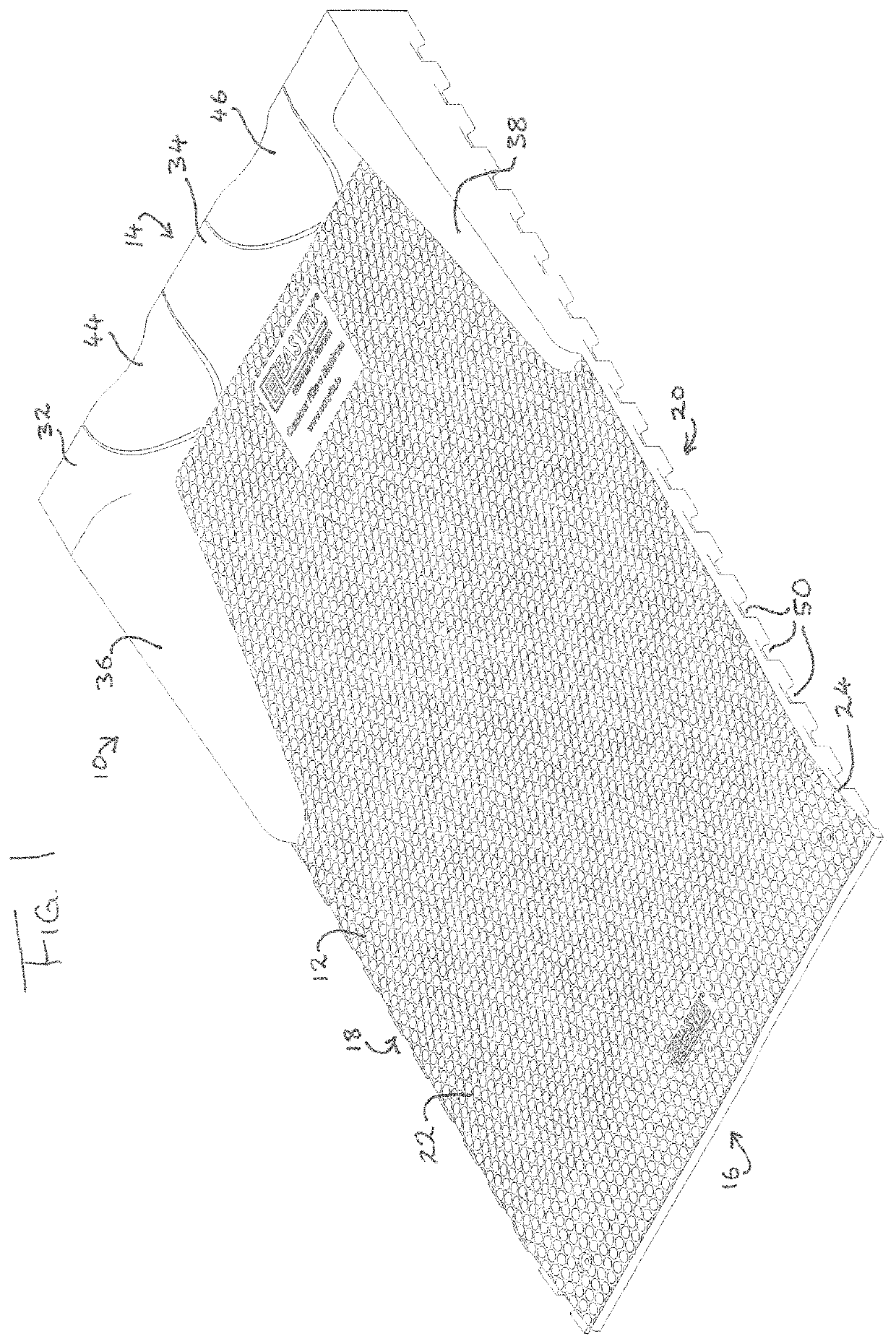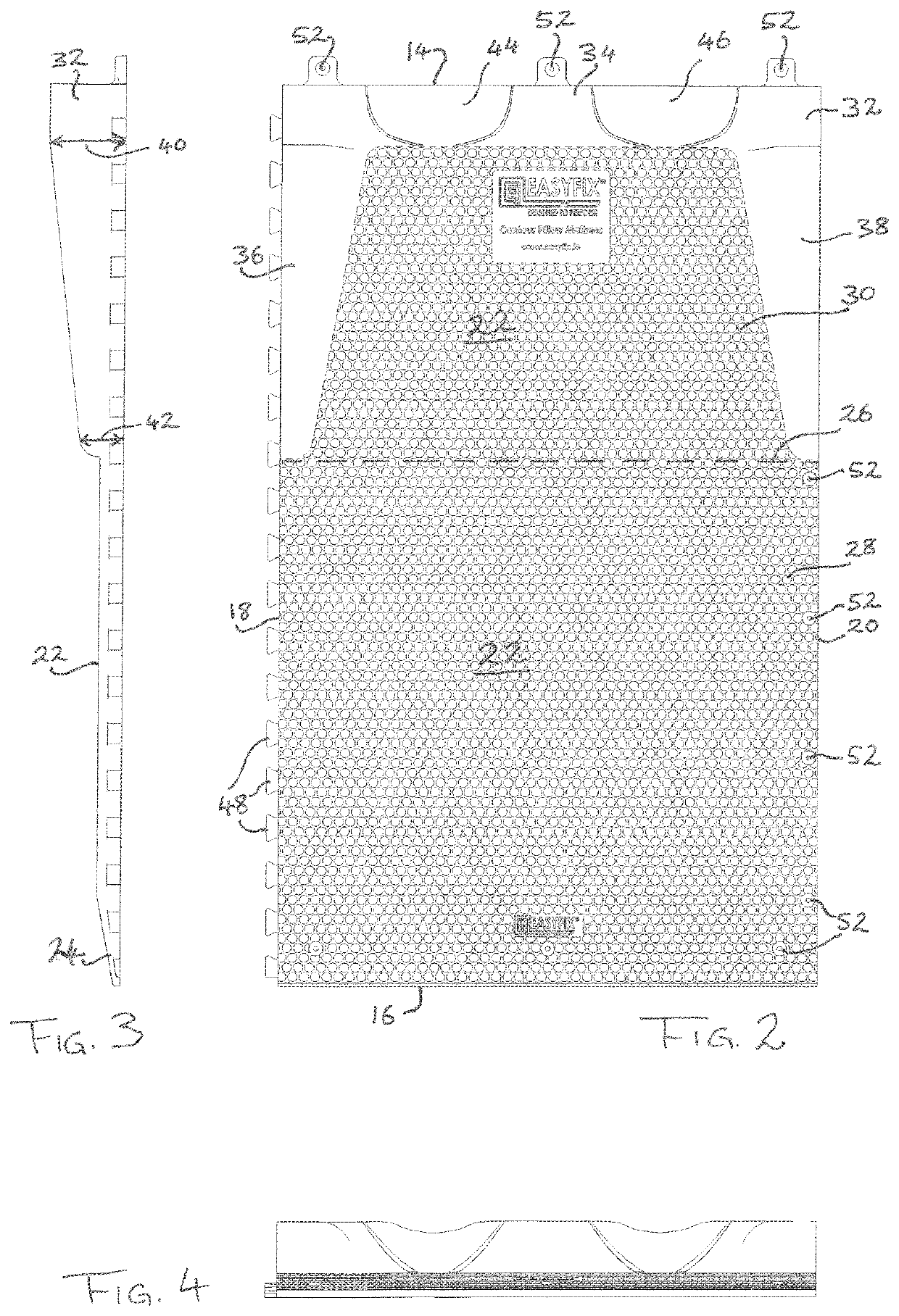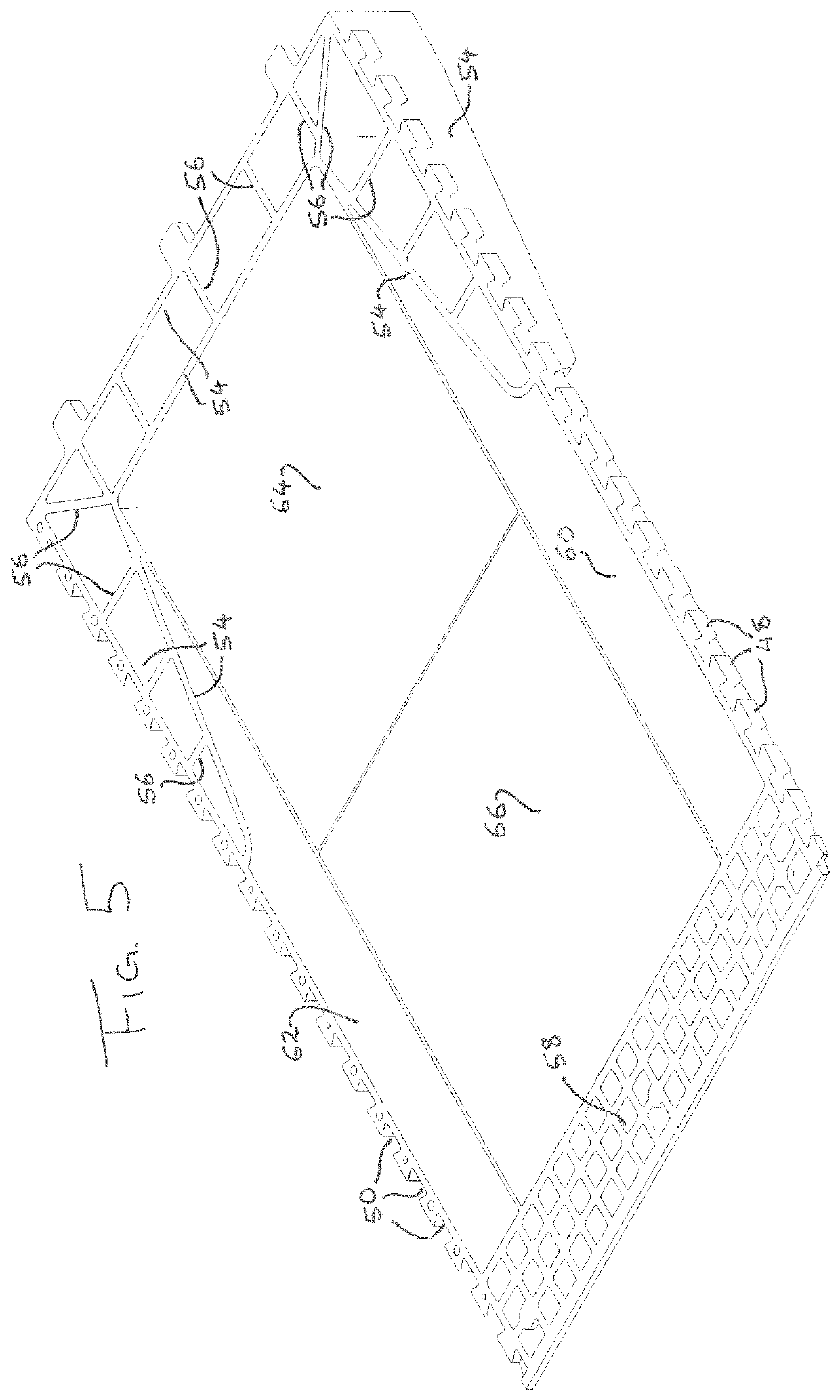Mat for a bovine animal
a technology for bovine animals and mats, applied in the field of mats for bovine animals, can solve the problems of affecting the health of bovine animals, adding to the complexity of the installation, and soiling on the mat, and achieve the effect of less compressibility and different cushioning levels
- Summary
- Abstract
- Description
- Claims
- Application Information
AI Technical Summary
Benefits of technology
Problems solved by technology
Method used
Image
Examples
Embodiment Construction
[0054]In FIG. 1 there is indicated, generally at 10, a mat for an animal. The mat is in the form of an elastomeric body having a ground-engaging underside (not visible in FIG. 1) and a top side 12. The mat has a head end 14, a tail end 16, a left side 18 and a right side 20.
[0055]The top side 12 defines a generally planar area 22 on which an animal may rest in use, that area being textured to assist in the animal's footing. A taper 24 in the height of the elastomeric body at the foot end reduces trip hazards for animals walking onto or off the mat, which in use is typically provided in a free stall with the head 14 positioned adjacent the head-end bars of the stall and the sides 18, 20 adjacent the side or divider rails of the stall. Thus, a cow (this particular embodiment being a mat designed for cattle) will walk onto the tail end and settle on the mat with its head at the head end and its tail at the tail end.
[0056]FIG. 2 shows the mat in plan view, with a notional dividing line ...
PUM
 Login to View More
Login to View More Abstract
Description
Claims
Application Information
 Login to View More
Login to View More - R&D
- Intellectual Property
- Life Sciences
- Materials
- Tech Scout
- Unparalleled Data Quality
- Higher Quality Content
- 60% Fewer Hallucinations
Browse by: Latest US Patents, China's latest patents, Technical Efficacy Thesaurus, Application Domain, Technology Topic, Popular Technical Reports.
© 2025 PatSnap. All rights reserved.Legal|Privacy policy|Modern Slavery Act Transparency Statement|Sitemap|About US| Contact US: help@patsnap.com



